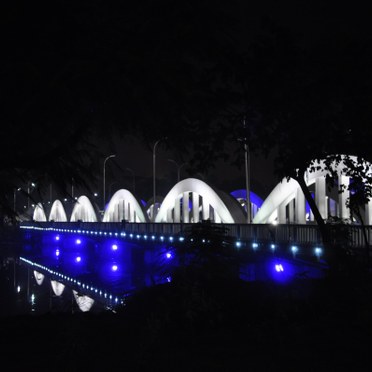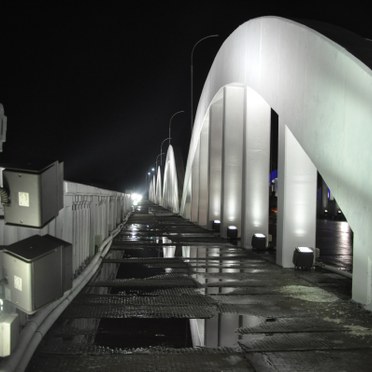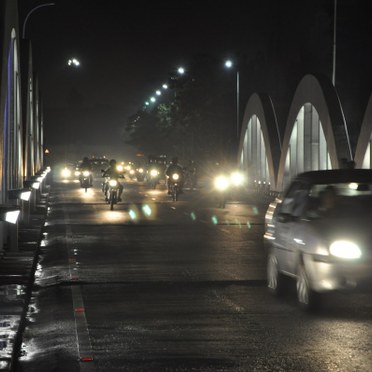Napier Bridge, Chennai, India
- Lamp efficacy
Lamp efficacy
Ensuring the lamp efficiently converts electricity into light (lm/W).
- Ballast classification
Ballast classification
Controlling the electricity supply to the lamp (Energy Efficiency Index).
- Luminaire distribution
Luminaire distribution
Controlling light emission using optics which bend and shape the light to the correct location.
- System efficacy
System efficacy
Combining optical and thermal control within the luminaire (luminaire lm/W).
- Presence/absence detection
Presence/absence detection
Presence: Lights automatically turn on/off with movement. Absence: Lights automatically turn off and must be manually switched on.
- Daylight detection
Daylight detection
Artificial lighting which responds to the natural light conditions.
- Constant illuminance
Constant illuminance
A function designed to produce correct light levels for the duration of the maintenance period.
- Task-scene setting
Task-scene setting
Allowing the user to set scenes and adapt the lighting to different tasks.
- Timed off
Timed off
Automatic cut-off can be installed to turn all lights off during unoccupied hours.
- Task lighting
Task lighting
Lighting task areas with the correct amount of light.
- Zoning of lighting
Zoning of lighting
Lighting is zoned according to area use.
- Maintenance schedule
Maintenance schedule
Maintenance must be performed in response to product age, performance and environment.
- Waste light
Waste light
Eliminating waste light which does not hit the intended target.
- Reflectance
Reflectance
Taking advantage of light which is reflected from the surface within the space.
- Visible smart metering
Visible smart metering
Results of actions can be quickly seen as increased or decreased energy use to encourage responsible energy consumption.
Qba blues brightens Chennai landmark
Thorn has supplied floodlights from its Qba range of architectural lighting equipment, to illuminate the Napier bridge in Chennai, India.
The bridge, originally built in 1869, is now in concrete, with six long arches spanning a total of 149m. Apart from providing a gateway to the famous Marina Beach, the bridge now forms a striking image at night to re-enforce the efforts towards developing the city's urban nightscape.
The project was part of a lighting strategy by The Corporation of Chennai and was designed by Sydney-based Lighting Design Partnership (LDP) in association with GA Architects.
Three hundred compact Qba floodlights are used to expose the dramatic form of the bridge, and are mounted at low level on the structure. This requires a fully protected, IP66 rated, optical and gear housing, features which are standard to the range. The floodlight also offers a wide range of colour filters and attachments for precise light control, and these were used in the project to achieve both lighting effects, and the necessary avoidance of obtrusive light.
"The key features of our design include lighting under the bridge that creates a floating ink blue illusion, and usage of low power fixtures to minimise glare," says Dhruvajyoti Ghose, managing director of LDP. When lit, the reflection of the bridge in the Cooum River gives a three-dimensional effect, thus adding depth and visual impact.
To complement the low arches, as well as to protect the daytime appearance using discrete equipment, the conventional road lighting across the bridge has been replaced with a unique solution of low-level Orus lanterns, introduced for the first time in India.
There is also a provision of dedicated "Roller" bulkhead lighting for pedestrians along the cycleway on either side of the bridge



